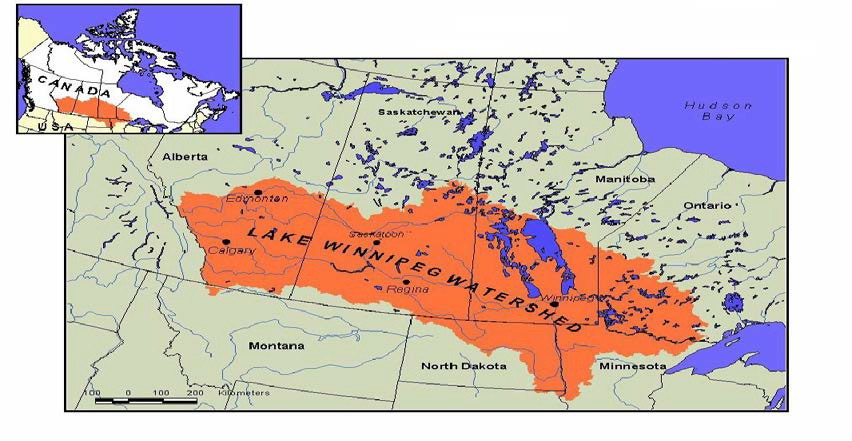The Minister of Environment and Climate Change, Catherine McKenna, announced that the Government of Canada will invest $25.7 million in the Lake Winnipeg Basin Program, which is part of the $70.5-million funding allocated for freshwater protection in Budget 2017. This program is part of broader efforts by this Government to advance work on freshwater management in Canada.
Minister McKenna said in a press released, “Canada believes that sustained action on Lake Winnipeg restoration is key to the future health of citizens and economic prosperity in this region. Working alongside provincial and Canadian partners, the Government of Canada will continue to promote a renewed freshwater protection approach for the Lake Winnipeg basin.”
The Lake Winnipeg Basin Program will refocus efforts on issues of great importance to Canadians and renew its commitment to protect freshwater in the Lake Winnipeg basin. New programming will focus on three priorities:
- Reducing nutrient pollution
- Enhancing collaboration to protect freshwater quality throughout the Lake Winnipeg basin
- Strengthening collaborative-governance opportunities and supporting enhanced engagement of Indigenous peoples in addressing freshwater issues
Environment and Climate Change Canada will continue to conduct science-based initiatives to reduce the effects of excess nutrients in the lake and its basin. It will also increase engagement and collaboration with Indigenous peoples, the Government of Manitoba, and all other levels of government in Canada and the United States regarding shared water resources in the basin.
The evaluation of phase II of the Lake Winnipeg Basin Initiative has been finalized, and it is now available on the Canada.ca website. Among the findings of the evaluation, the report noted:
- ECCC science activities have contributed to the development and application of predictive modelling of nutrients in the Lake Winnipeg Basin to support work by the Province of Manitoba on understanding optimal nutrient reduction scenarios in key tributaries. Progress is being made toward an improved understanding of strategies for reducing nutrients in the basin, but more evidence is required to identify actions that will have the greatest impact and to improve the dissemination of research findings and water quality data.
- The LWBSF is well known among stakeholder groups in the Lake Winnipeg Basin and there is a strong demand for funding to conduct high-quality projects. Estimates of total phosphorus reductions from LWBSF funded projects are substantially greater in the second phase of the program than in Phase I and are on track to meet program targets. It should be noted, though, that the level of nutrient reductions delivered by these projects is extremely small in relation to total estimated phosphorus loads, with total reductions delivered over five years estimated at less than 1 per cent of the annual nutrient loads entering the lake.
New programming will build on Canada’s previous commitment to Lake Winnipeg, and recommendations from this evaluation will be used to make improvements to this next phase of funding.
Minister McKenna has engaged in a dialogue on Lake Winnipeg basin priorities with stakeholders representing Indigenous groups, the Province of Manitoba, municipalities, academia, industry, and environmental non-governmental organizations.
Lake Winnipeg’s surface area is approximately 24 500 square kilometres, almost 4.5 times the size of Prince Edward Island. In September 2006, an algal bloom covered almost the entire surface of Lake Winnipeg. The ratio of land-drainage-to-lake surface area is the largest in the world, which means that excess nutrient loading in the basin further compromises Lake Winnipeg’s natural ability to process nutrient pollution.
Lake Winnipeg is important to the Canadian economy, generating millions of dollars of revenue in the hydroelectricity, recreation, and commercial freshwater fishing industries.










